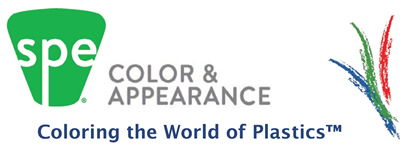Black Pearlescent Pigments for Plastics 
Jonathan Doll
Sun Chemical
The paradoxical nature of black pearlescent pigments is due to the contradictory facts that 1) the color black is characterized by the absence of light and 2) the iridescence of pearlescent pigments is due to the structure-induced interference of light. Due to this apparent contradiction, the current black pearl technology is limited to pigments that either have a jet, matte-black appearance with no iridescence, or to iridescent black pearls that have blue, violet or green undertones and lack sufficient jetness. None of these pigments show the sparkle that pearlescent pigments are traditionally known for. A new black pearlescent pigment has been developed that has exceptional luster an sparkle and is sufficiently jet. The new pigments can be incorporated into a range of plastics with no reduction in effect. The properties of this pigment with respect to plastics will be described.
Biography – Jonathan Doll
 Jonathan received a Ph.D. in polymer science from the University of Connecticut in 2011. During his studies, he researched the synthesis and/or manipulation of many varieties conducting and semiconducting nanomaterials including quantum dots, carbon nanotubes, iron oxide nanoparticles, metallic nanoparticles and conductive polymers. His published technical work includes papers in the journals Nature Nanotechnology and Nano Letters as well as presentations at multiple international conferences. Jonathan joined the Sun Chemical team in 2012 as a Senior Chemist in the Effect Pigments group. In 2014, he became the Leader of the Effect Pigments team at Sun Chemical. His research at Sun involves the synthesis and design of new metallic and pearlescent effects pigments as well as improving the properties of existing effects pigments. In his five years at Sun Chemical, Jonathan has filed over eleven provisional patents and published three papers.
Jonathan received a Ph.D. in polymer science from the University of Connecticut in 2011. During his studies, he researched the synthesis and/or manipulation of many varieties conducting and semiconducting nanomaterials including quantum dots, carbon nanotubes, iron oxide nanoparticles, metallic nanoparticles and conductive polymers. His published technical work includes papers in the journals Nature Nanotechnology and Nano Letters as well as presentations at multiple international conferences. Jonathan joined the Sun Chemical team in 2012 as a Senior Chemist in the Effect Pigments group. In 2014, he became the Leader of the Effect Pigments team at Sun Chemical. His research at Sun involves the synthesis and design of new metallic and pearlescent effects pigments as well as improving the properties of existing effects pigments. In his five years at Sun Chemical, Jonathan has filed over eleven provisional patents and published three papers.
